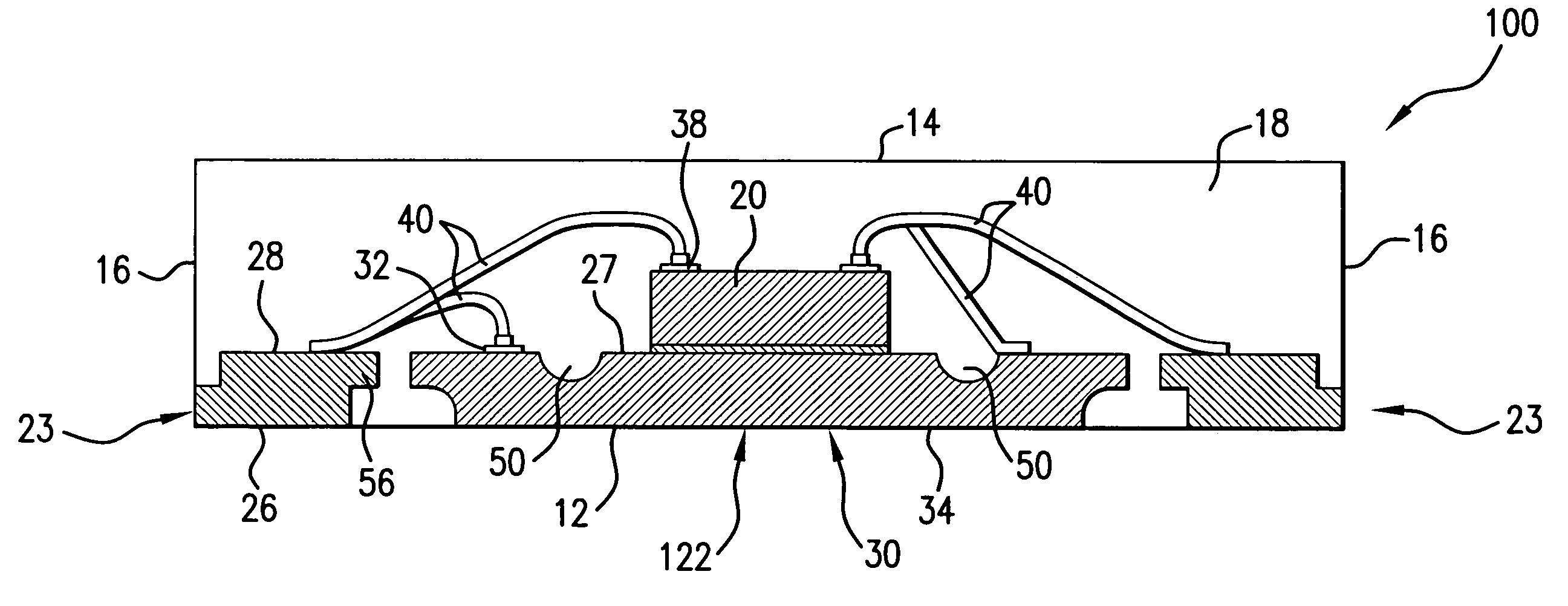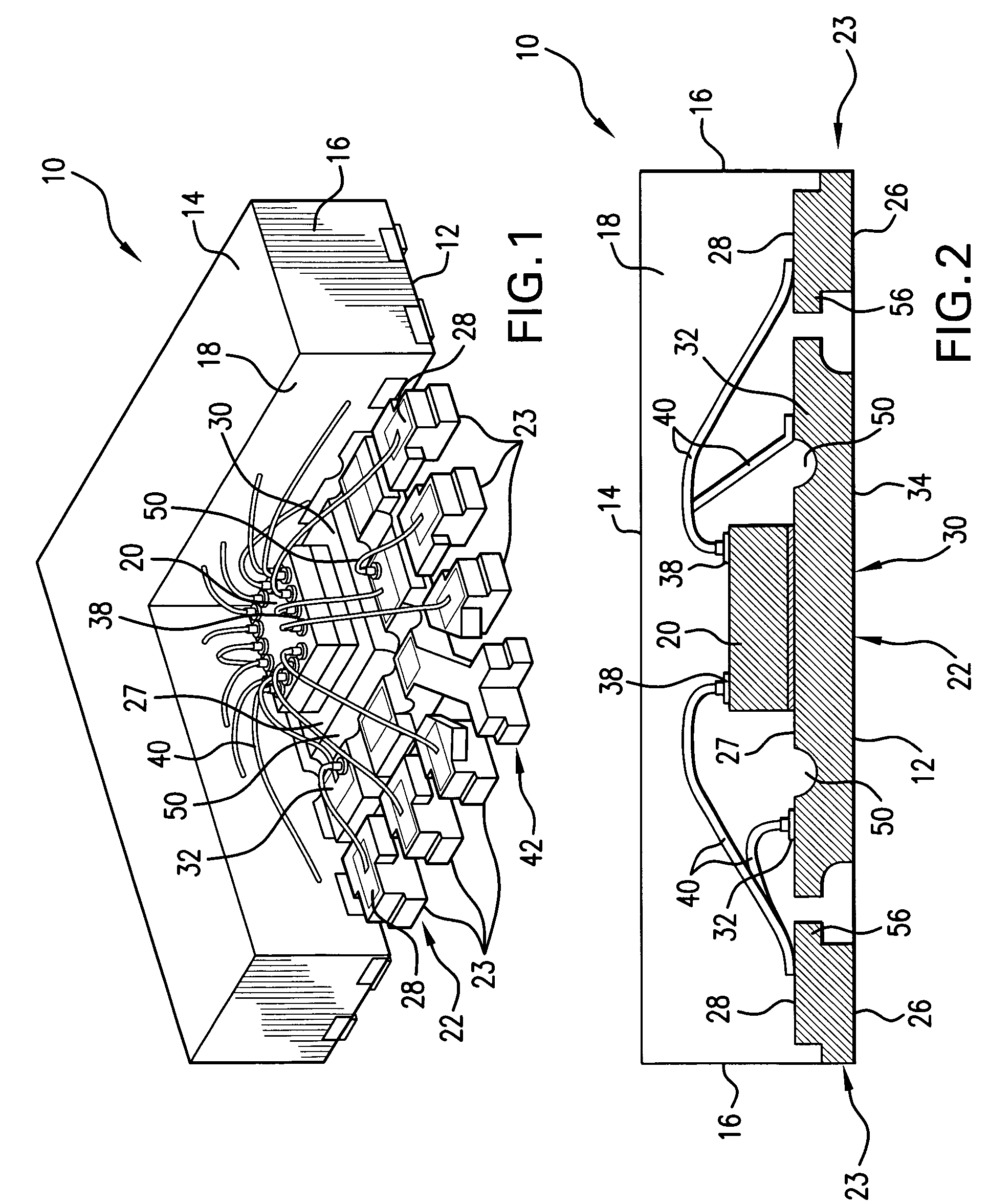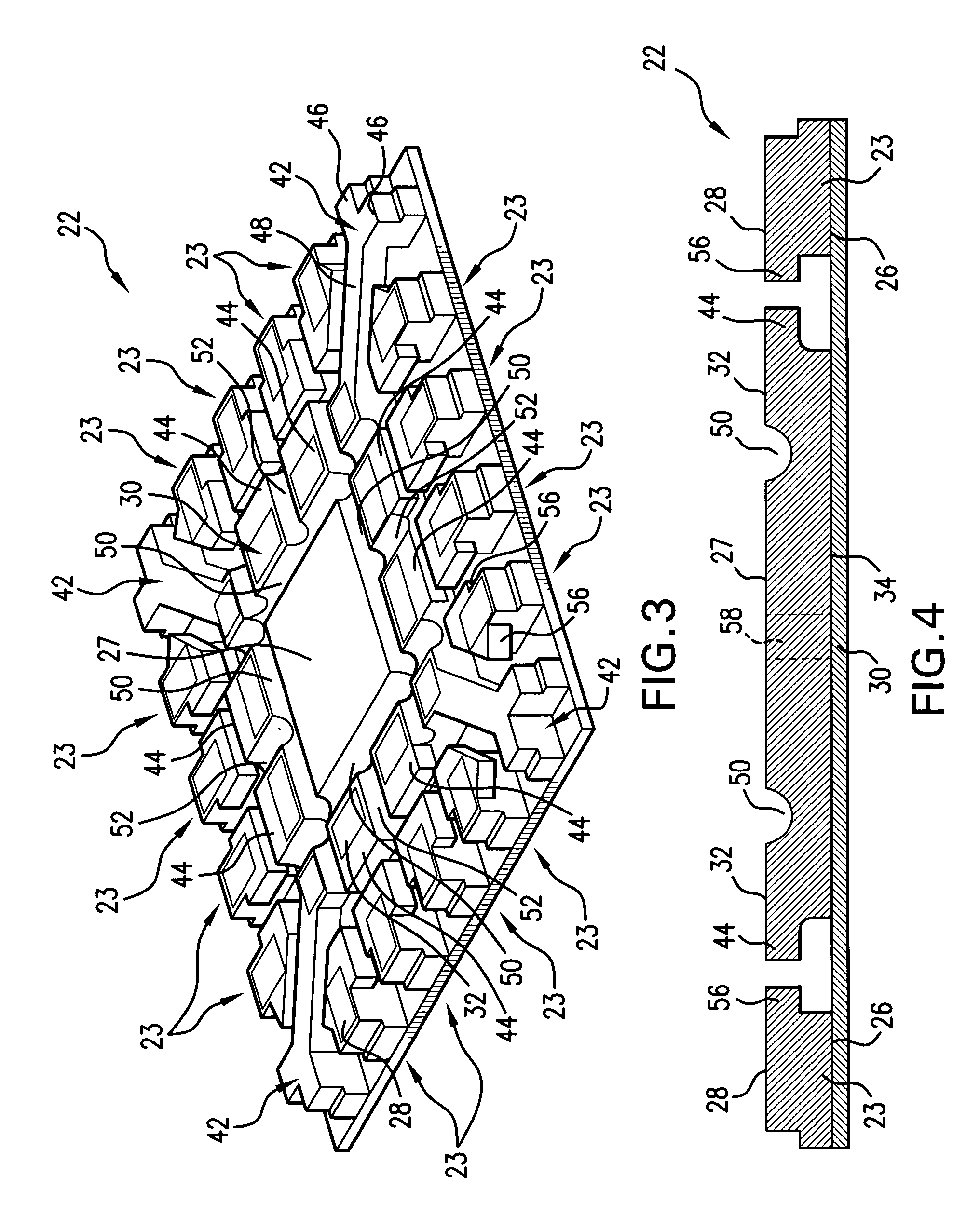Die pad for semiconductor packages and methods of making and using same
a technology of semiconductor packages and die pads, which is applied in the direction of semiconductor devices, semiconductor/solid-state device details, electrical devices, etc., can solve the problems of insufficient strength of half-etched steps or reentrant portions on the side surfaces of die pads to retain die pads, insufficient size or length of half-etched steps or reentrant portions to thoroughly prevent moisture from permeating into the vicinity of semiconductor chips, etc., to facilitate the egress of moisture from the package
- Summary
- Abstract
- Description
- Claims
- Application Information
AI Technical Summary
Benefits of technology
Problems solved by technology
Method used
Image
Examples
first embodiment
[0042]FIG. 1 is a partial cut-away, top perspective view of a quad, no-lead, wirebonded semiconductor device package 10 in accordance with the present invention, and FIG. 2 is a cross-sectional elevation view of the semiconductor device package 10. Referring to FIGS. 1 and 2, the semiconductor device package 10 has a bottom (first) package face 12, a top (second) package face 14 opposite the bottom package face 12, and package side faces 16 extending between the bottom and top package faces 12, 14. The various package faces are formed in part by a molding compound 18, which covers a semiconductor device (die) 20 and portions of an electrically conductive lead frame 22. The electrically conductive lead frame 22 includes a plurality of leads 23. Each of the leads 23 has a first lead surface 26 disposed at the bottom package face 12 and a bond site 28 opposite the first lead surface 26. In the embodiment shown, the bond sites 28 are electrically connected to associated input / output I / O...
second embodiment
[0061]It is contemplated that the die pad 30 may incorporate any one or both of the roughened surface 27 and the grooves 50, 52, with or without the use of lips 44 and tie bars 42. For example, FIG. 7 is a partial cut-away, top perspective view of a quad, no-lead, wirebonded semiconductor device package 100 in accordance with the present invention, and FIG. 8 is a cross-sectional elevation view of the semiconductor device package 100. The package 100 of FIGS. 7 and 8 is substantially similar to the package 10 shown in FIGS. 1-6, except that the lead frame 122 in package 100 does not include lips 44 protruding from the sides of the die pad 30, as found in the lead frame 22 of package 10. Like the lead frame 22, the lead frame 122 includes a roughened surface 27 and channels 50 and 52 disposed in the die pad 30, which are effective in securing the die pad 30 to the molding compound 18.
third embodiment
[0062]It is also contemplated that the number and location of the leads 23 may be modified as needed for a particular application. For example, FIG. 9 is a top perspective view of a lead frame 222 for a dual, no-lead, wirebonded semiconductor device package in accordance with the present invention, and FIG. 10 is a cross-sectional elevation view of the lead frame 222. The lead frame 222 of FIGS. 9 and 10 is substantially similar to the lead frame 22 shown in FIGS. 1-6, except that the lead frame 222 includes leads 23 disposed on two sides of the die pad 30 rather than on all four sides, as in the lead frame 22. Also unlike the die pad 30 in lead frame 22, the die pad 30 in lead frame 222 includes channels 50, 52 and tabs 44 on only two sides of the die pad 30 rather than four, and the tie bars 42 extend from the sides of the die pad 30 rather than the corners. Like the lead frame 22, the lead frame 222 includes a roughened surface 27 and channels 50 and 52 disposed in the die pad 30...
PUM
 Login to View More
Login to View More Abstract
Description
Claims
Application Information
 Login to View More
Login to View More - R&D
- Intellectual Property
- Life Sciences
- Materials
- Tech Scout
- Unparalleled Data Quality
- Higher Quality Content
- 60% Fewer Hallucinations
Browse by: Latest US Patents, China's latest patents, Technical Efficacy Thesaurus, Application Domain, Technology Topic, Popular Technical Reports.
© 2025 PatSnap. All rights reserved.Legal|Privacy policy|Modern Slavery Act Transparency Statement|Sitemap|About US| Contact US: help@patsnap.com



